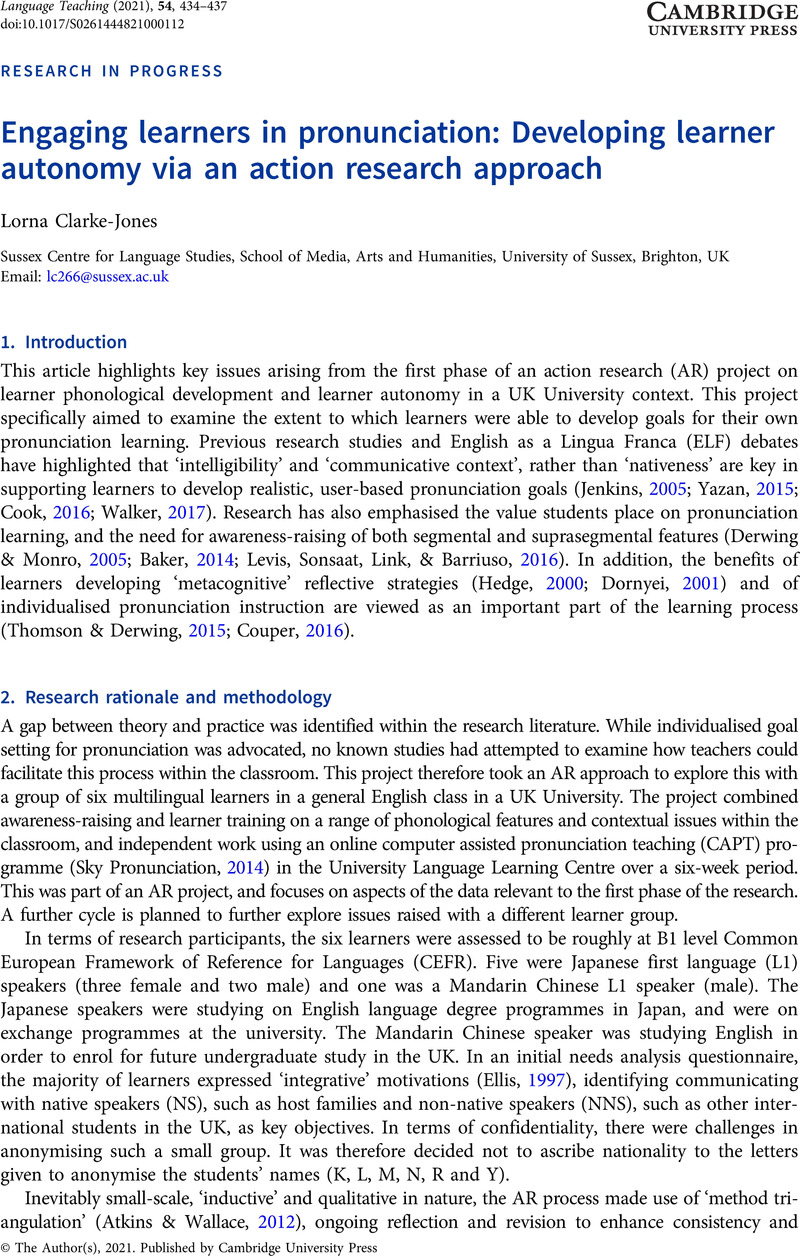Crossref Citations
This article has been cited by the following publications. This list is generated based on data provided by Crossref.
Kong, Jufang
and
Pan, Mingwei
2023.
The role of diagnostic writing assessment in promoting Chinese EFL students’ learning autonomy: An action research study.
Language Teaching Research,



